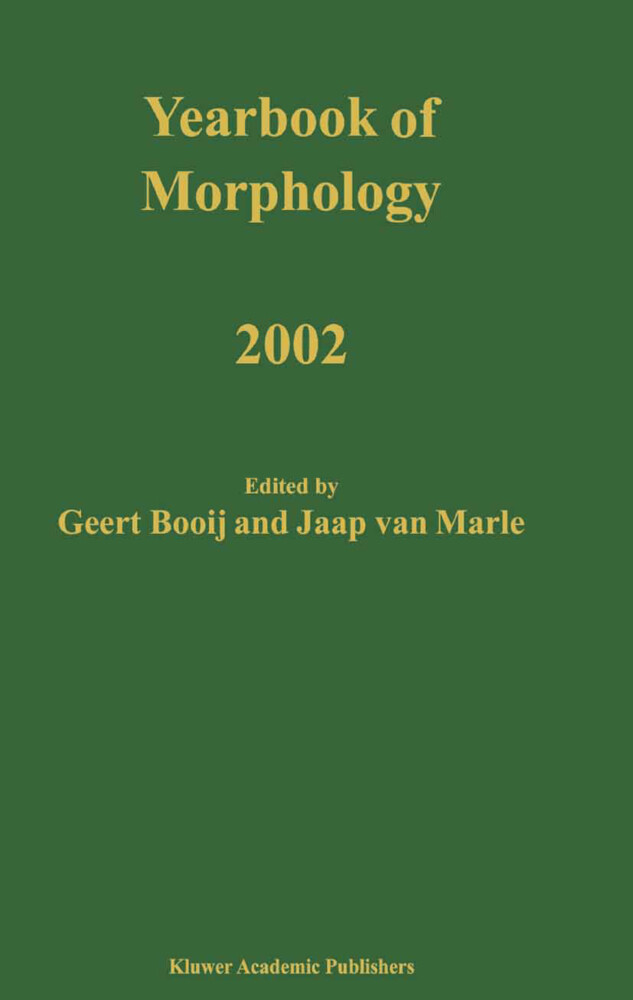
Zustellung: Sa, 18.01. - Di, 21.01.
Versand in 2 Tagen
VersandkostenfreiBestellen & in Filiale abholen:
A revival of interest in morphology has occurred during recent years. The Yearbook of Morphology series, published since 1988, has proven to be an eminent support for this upswing of morphological research, since it contains articles on topics which are central in the current theoretical debates which are frequently referred to.
In the Yearbook of Morphology 2002 a number of articles is devoted to the morphology of a variety of pidgin and creole languages which appear to have much more morphology than traditionally assumed.
A second topic of this volume is the morphological use of truncation for the coinage of proper names in Germanic and Romance languages, in particular endearment forms, with highly interesting consequences for the theory of phonology-morphology interaction.
Thirdly, this volume contains articles on how affixes are combined and ordered in complex words, and the complex linguistic principles behind these orderings.
In the Yearbook of Morphology 2002 a number of articles is devoted to the morphology of a variety of pidgin and creole languages which appear to have much more morphology than traditionally assumed.
A second topic of this volume is the morphological use of truncation for the coinage of proper names in Germanic and Romance languages, in particular endearment forms, with highly interesting consequences for the theory of phonology-morphology interaction.
Thirdly, this volume contains articles on how affixes are combined and ordered in complex words, and the complex linguistic principles behind these orderings.
Inhaltsverzeichnis
The morphology of creole languages (guest editor: Ingo Plag). - Introduction: The morphology of creole languages. - Pidgin inflectional morphology and its implications for creole morphology. - The emergence of productive morphology in creole languages: the case of Haitian Creole. - How transparent is creole morphology? A study of Early Sranan word-formation. - Tonal morphology in a creole: High-tone raising in Saramaccan serial verb constructions. - Truncation. - Monosyllabicity in prosodic morphology: the case of truncated personal names in English. - Morphology in truncation: the role of the Spanish desinence. - Affix ordering. - Suffix ordering in Bantu: a morphocentric approach. - The interaction of morphology and syntax in affix order.
Produktdetails
Erscheinungsdatum
08. Dezember 2010
Sprache
englisch
Auflage
Softcover reprint of hardcover 1st ed. 2003
Seitenanzahl
336
Reihe
Yearbook of Morphology
Herausgegeben von
G. E. Booij, Jaap van Marle, Geert Booij
Verlag/Hersteller
Produktart
kartoniert
Abbildungen
V, 324 p.
Gewicht
511 g
Größe (L/B/H)
235/155/19 mm
Sonstiges
Paperback
ISBN
9789048162307
Entdecken Sie mehr
Bewertungen
0 Bewertungen
Es wurden noch keine Bewertungen abgegeben. Schreiben Sie die erste Bewertung zu "Yearbook of Morphology 2002" und helfen Sie damit anderen bei der Kaufentscheidung.










